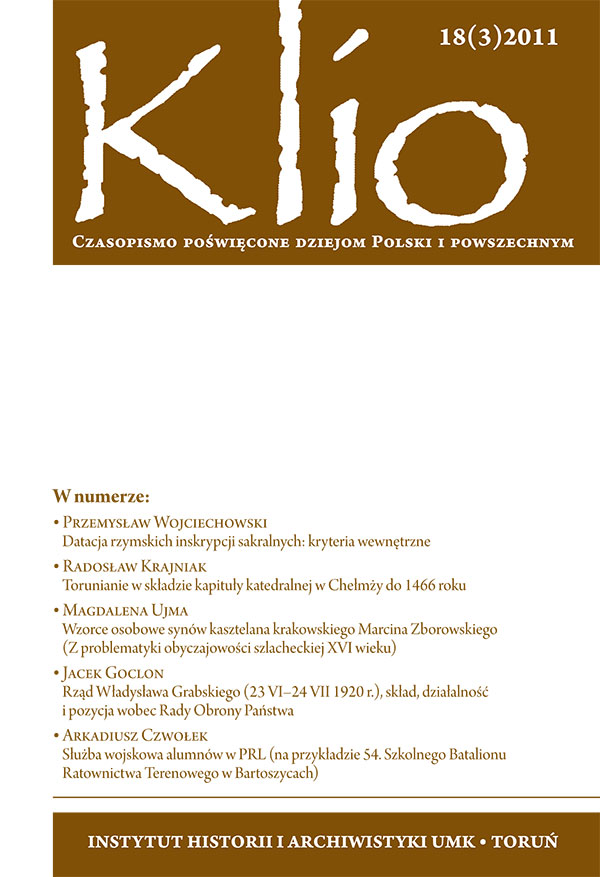Datacja rzymskich inskrypcji sakralnych: kryteria wewnętrzne
DOI:
https://doi.org/10.12775/KLIO.2011.042Abstrakt
Dating of Roman Sacral Inscriptions: Internal Criteria
(Summary)
Epigraphy has developed many methods aimed at establishing a more or less precise foundation date of a given inscription. The present article concentrates on the so-called internal criteria of dating connected with the content of engravings. Basing on the collection of sacral inscriptions from ancient Aquileia, I intend to indicate which elements of engravings are significant in directly or indirectly establishing a foundation date (or period) of an inscription. The example of Aquileia suggests that while researching the chronology of religious life in chosen Roman cities one may expect that the share of inscriptions dated in an unqualified way will not exceed several percent within a collection of epigraphic material from a given cult centre. In such a case, it is necessary to use inscriptions dated indirectly, basing on clues that can be found in the content and the form of engravings. The least precise dating method is concerned with external criteria, such as the type of material used in inscriptions, their decoration and paleographic features. A more precise date indication can be established by analysing inscriptions with reference to particular elements that constitute their content as well as manner of expression (orthography, style, abbreviations, formulas). A mention of a famous, historical person in an inscription is a valuable means of accuracy improvement in dating. Of course, there are cases of inscriptions made many years after the death of the person mentioned, which may result in incorrect dating; however, this fallacy concerns mainly commemorative inscriptions and to a lesser extent sacral ones. All tituli sacri from Aquileia that mention historical persons are contemporary to them. The dating of these inscriptions was facilitated by their content as they contain terms connected with Roman army and administration. Extended names of army units or offices and officials of various ranks present in the engravings are often the only premise for establishing their terminus post quem. Nevertheless, it is worth remembering that the onomastic criterion should be deemed complementary to other dating premises. The complementarity of various apparently meaningless elements is often the only way to establish the chronology of such invaluable sources as Roman sacral inscriptions.
Stahování
Publikováno
Jak citovat
Číslo
Sekce
Stats
Number of views and downloads: 524
Number of citations: 0



